Part I
by Natalie Taylor with photos by Jack Paulus
The church of San Rafael is the oldest religious structure in Centro, and holds some of the oldest art. In 1555, the viceroy designated what is currently the historical center a "Spanish town," named San Miguel el Grande, thus making it an official city with its own administration, and a military presence to protect the residents within. According to royal decree, a church needed to be built within the territorial boundaries, and sometime before 1560 San Rafael was constructed. The church followed traditional church rules of construction, oriented east/west. The other churches within Centro, laid out in the same manner are Santa Ana and Las Monjas. The others—including the Parroquia—are oriented north/south.
For about twenty years San Rafael functioned as the parish church—parroquia provisional, until the current Parroquia was built. Even afterwards, San Rafael continued to be called "la vieja Parroquia," the old parish church. It is therefore fascinating to consider some of the sculptures and paintings housed within San Rafael since its construction, or shortly thereafter.
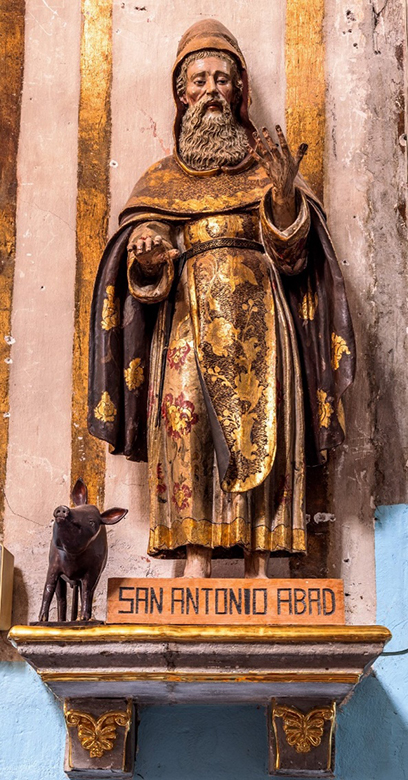
Perhaps the oldest one is a on the left wall close to the entry. It’s a representation of St. Anthony the Abbot, considered the father of monasticism. The wooden statue was crafted sometime in the 17th century, using estofado, an application of gold leaf to simulate the look of brocade. There is a pig at the feet of the saint because he is said to have had swine as companions when he went into the wilderness. The pig was added later; it is not known if one was there originally. Felipe Palacios, current city chronicler, helped with the identification of this, and many of the other images with clues pointing to specific iconography of saints. Saint Veronica, for example, is shown holding a cloth imprinted with the face of Jesus, as she supposedly wiped his face on the cross. Her sculpture is on the right wall in the depiction of the crucifixion of Jesus.
To the left of the altar, its full view obstructed by a cabinet before it, is a depiction of the Virgin of Valvanera. That identification is made possible by two elements—a tree, and a shepherd. According to legend, an image of the saint, hidden within the trunk of a tree, was discovered by a shepherd. Inside the storage area (accessible only with permission), there was a puzzling painting of the Virgin that I could not identify, until Mr. Palacios explained it. The painting’s central figure is the Virgen de los Dolores—the Virgin of Sorrows (see the dagger in her heart), and seven men kneeling in adoration. This refers to the order of Servites, founded in 1233 in Florence. A group of men retreated from what they found to be a morally depraved society to follow a life of poverty, and devotion to God, and particularly to the Virgin Mary. The painting shows great antiquity in technique and evidence of aging of the canvas. It is another of the anonymous works in the storage area.
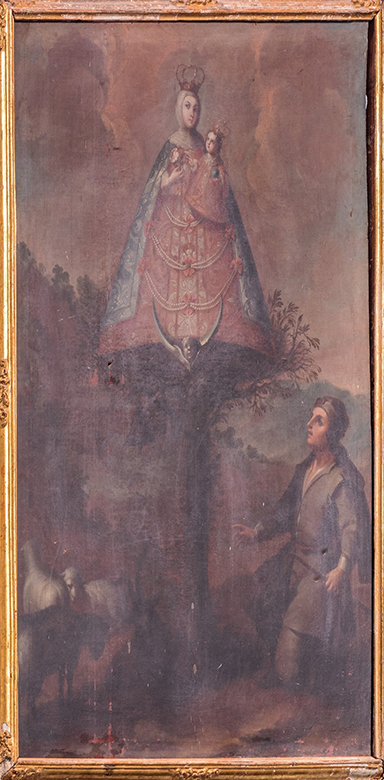
The Virgen of the Valvanera
*
An interesting feature of San Rafael is a side chapel along the left wall. Originally there was simply a door leading to the exterior, and what was then the Mercado Aldama, which can still be identified by the columns with an inscription above. Zeferino Gutierrez, born in 1840, made several major architectural contributions in San Miguel. He is responsible for the addition of the pink façade of the Parroquia, between 1880 and 1890; and the dome over the Las Monjas church. Zeferino designed and built the Virgen de la Saleta chapel on the left wall of the nave, where his wife and son are buried—a plaque commemorates the two separate dates. A painting above the plaque appears to be of Saint Francis of Assisi; dated March 3, 1992 and signed by Antonio Lopez Torres. I have yet to find any information about this artist. The sculpture on the altar refers to the Virgin, sighted by two children in the town of Salette in France, in 1846. The remains of Zeferino, are not in the chapel, they are stored in the ossuary behind iron grates, on the right at the entry to the church. His date of his birth and death is not easily visible, it is on a panel on the lateral wall within the ossuary.
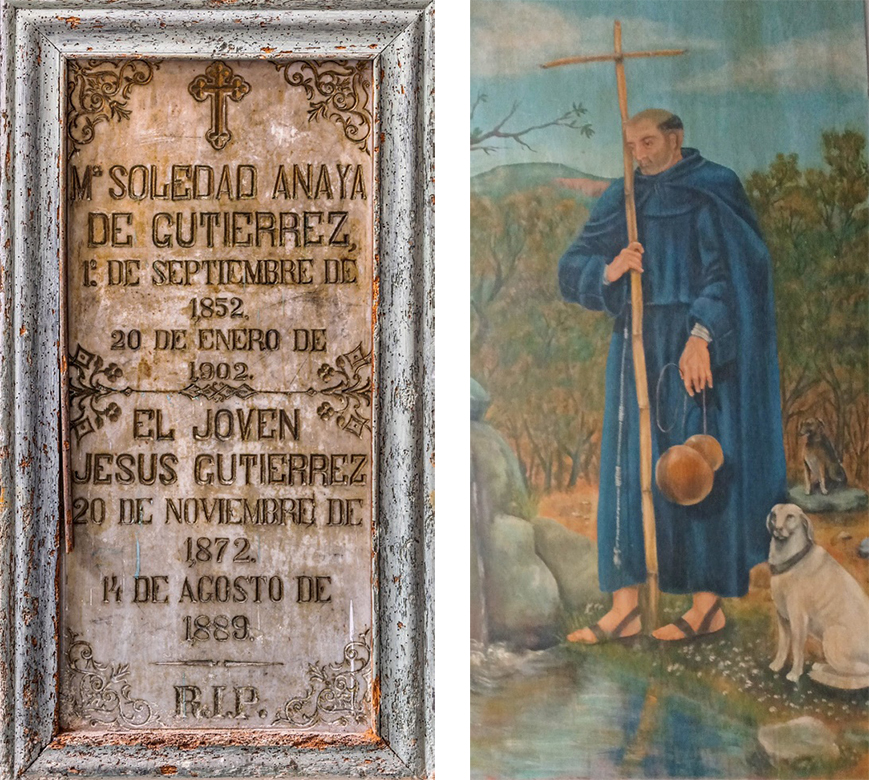
Commemorative plaque for the wife and son of Zeferino Gutiérrez. On the plate there is a painting of Saint Francis of Asís with the signature of Luis Antonio López Torres, March 3, 1992
*
On the left wall of the nave is a large-scale scene of Jesus behind bars with Roman soldiers guarding him on either side. The painting occupies a space of more than 12 square feet and appears to have been done in the late 19th or early 20th century. In the center of this scene is a cell with gratings, and inside a sculpture of Jesus, making it an example of mixed media, even before the term was used. A child sits at the feet of Jesus, and without any expert explanation, I suppose he could represent Jesus himself as a child.
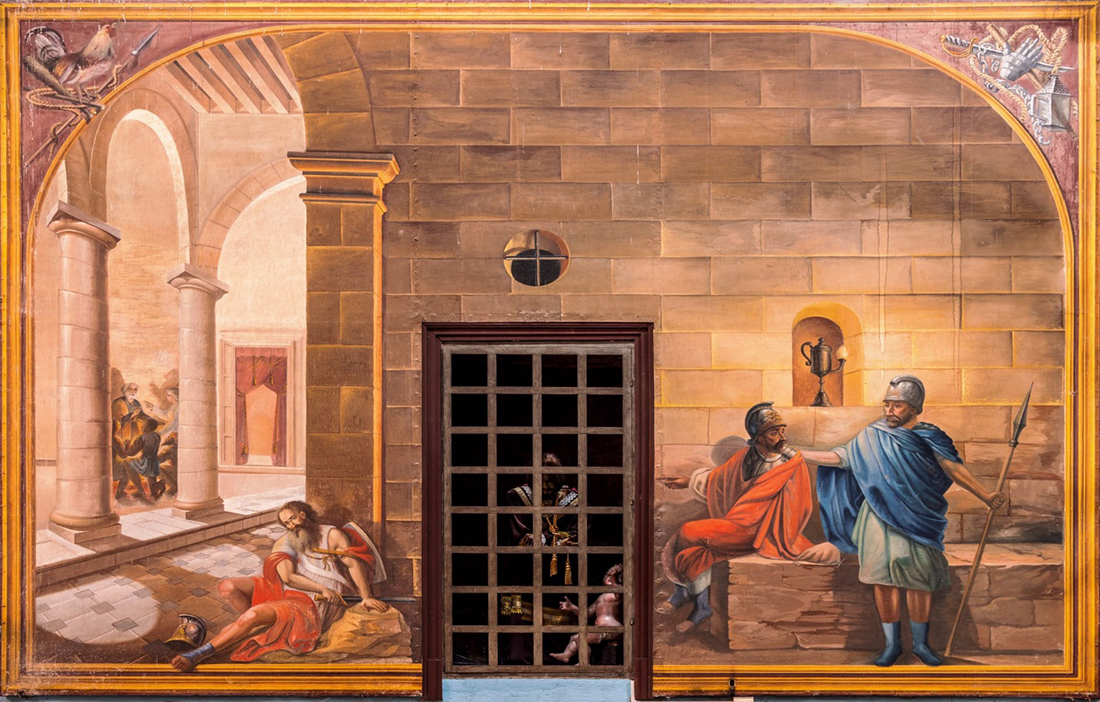
These are just some of the artworks in the church of San Francisco. Those within the main area of the church can be viewed and appreciated by anyone.
**************
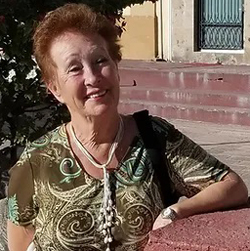
Natalie Taylor, born to Ukrainian parents, grew up in Argentina, where her family fled after WWII. They eventually moved to the U.S., and she spent most of her adult life there. She has a journalism degree, and an MFA in creative writing from Vermont College, Montpelier, VT. Her short stories, and poetry have been published in numerous literary magazines, and she has received several literary awards. She and her husband currently reside in San Miguel, where she has a weekly column in Atención, for which she also does translations. She has two books about San Miguel, available on Amazon or at the Tesoros Book Store: "Of All the Towns in All the World," and "SMA Self-Guided Historical Walking Tour." Her memoir, "The Tango House," will be coming out soon.
www.natalietaylor.org
**************
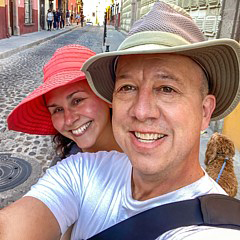
Jack Paulus has lived in SMA for a year and a half but this was his first Semana Santa. Before moving here he spent decades in the movie industry (Pixar). There expressing creativity collectively involved hundreds of other people. He observes, "I have been taking photos since the age of 12 and now I enjoy capturing life around me in images in a solo capacity."
**************
*****
Please contribute to Lokkal,
SMA's online collective:
 ***
***
Discover Lokkal:
Watch the two-minute video below.
Then, just below that, scroll down SMA's Community Wall.
Mission

Visit SMA's Social Network
